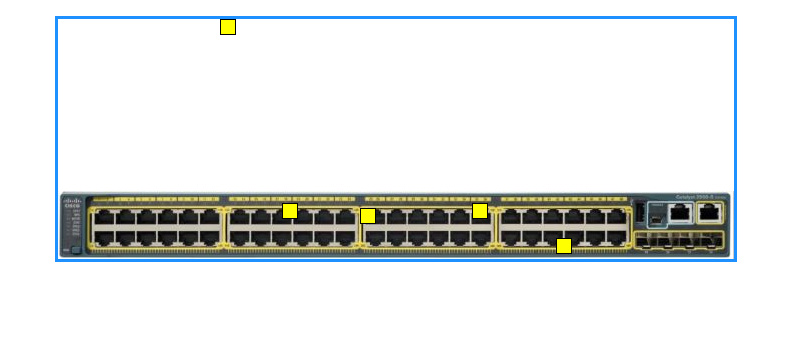Hi,
I’m trying to implement a Node Template editor for network elements.
In general, i would like to let the user the ability ability to drag some picture of network elements and to to locate its ports dynamically.
In the following picture :
I have implemented a simple Group Template with some Cisco router picture.
On click, somewhere on the picture, the applications adds a re-sizable rectangular red node.
The red nodes represents the device ports.
At some point, the diagram is saved to disk as JSON string.
When the user wants to add a node of this type, the JSON string is loaded from disk as a group node. The application rolls over the group member parts (the red nodes) and adds port “panel” to the template, for each node, as follows:
var nodeTemplate = diagram.nodeTemplateMap.get(“cisco2950”);
var group = diagram.findNodeForKey(1);
var i = 0;
for (var it = group.memberParts.iterator; it.next();) {
var node = it.value;
var s = node.findObject("SHAPE");
var x = group.position.x + node.position.x;
var y = group.position.y + node.position.y;
var portId = "Eth";
nodeTemplate.add(
$(go.Panel,
{position: new go.Point(x, y)},
$(go.Shape,
{width: s.width, height: s.height,
portId: portId + i, fill: "green" })
));
i++;
};
The reason that i selected the group–>nodes relationship to be the source of my template is because the red nodes can be moved and located on the group surface, and because they are resize-able.
I couldn’t implement this solution with node–>ports relationship because the ports (itemarray) in the node are not movable nor resize-able.
My question is if there is a smarter way to implement a node template editor using other object type rather than group->nodes relationship.
Recall, that the ports should be able to be moved and resized.
Thanks
Tany


